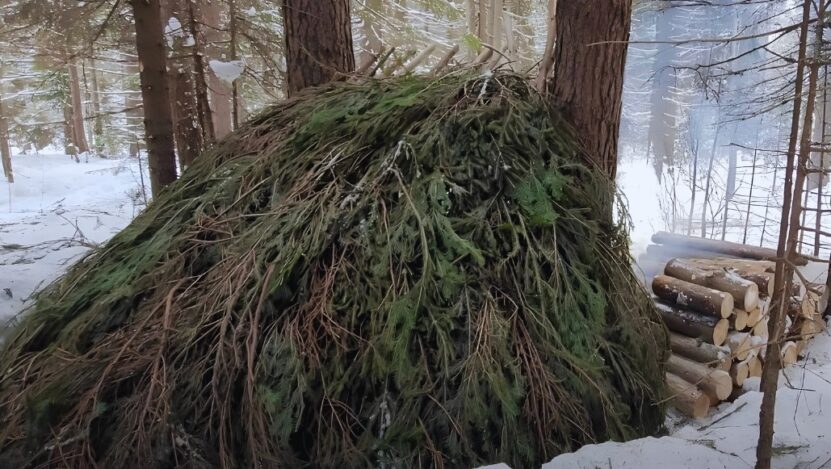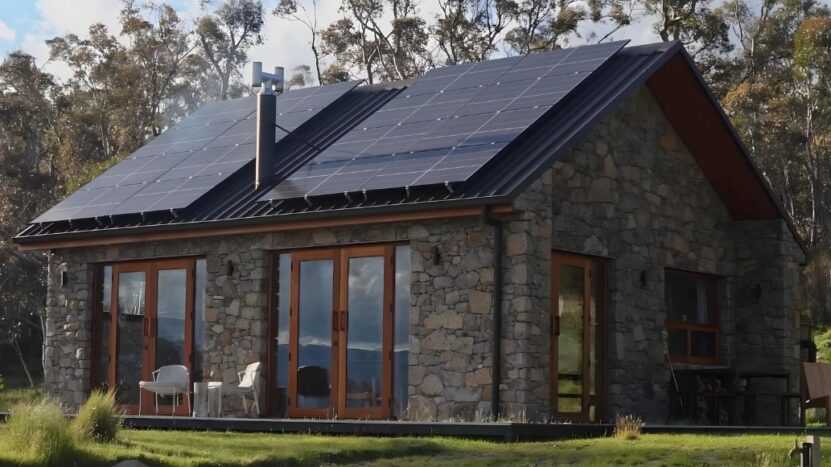Finding yourself in a wilderness emergency can be daunting, but knowing how to build a quick and effective shelter can be a real lifesaver. Today, I’ve prepared some essential tips and tricks for constructing survival shelters so that you can make sure you’re protected against the elements.
It doesn’t matter if you’re dealing with wind, rain, or cold, having a solid plan can make all the difference and keep you warm and safe from the elements.
Shelters Can Save You In the Wilderness
When night falls, temperatures drop, and visibility decreases, having a shelter can mean the difference between comfort and hypothermia. Weather changes, such as freezing winds, rain, or intense sun, pose significant risks. Building a shelter is a critical first step in emergency survival to conserve energy and protect yourself from the elements.
Choosing the Right Location
When you’re out there trying to set up a shelter, the location is everything. You really wanna find a spot that’s got some built-in protection, easy access to the stuff you need, and keeps you safe from any potential threats.
I’d recommend looking for areas that have natural windbreaks, like big boulders or thick bushes and trees. Steer clear of any low spots where water might pool up, and definitely don’t set up shop anywhere that looks like it’s already claimed by the local wildlife. At the end of the day, finding a safe spot with all the resources you need should be your top priority.
Types of Shelters
Different shelters serve different needs, whether you’re seeking short-term survival, warmth, or protection from predators. Here are some popular options I’d recommend:
Lean-to Shelters
Lean-to shelters are super easy to throw together, and they work great when the weather’s not too crazy. All you have to do is find a couple of sturdy branches to use as supports, then just lean some sticks and leaves and stuff up against them. Easy peasy!
And to finish it off, you just pile on a bunch of natural materials like leaves and branches to insulate it and keep the wind out. It’s a simple little setup, but it gets the job done.
A-frame Shelters
A-frame shelters are actually pretty sweet for keeping warm in colder weather. You just lean a bunch of branches up against each other to make this triangle shape, then cover it all up with leaves, grass, or whatever other natural debris you can find.
The design traps in that body heat so you stay nice and warm, even on those chilly nights. It’s a super simple but effective way to build yourself a cozy little hideout. I’ve used these a few times when I was out camping, and they work like a charm.
Tarp Shelters
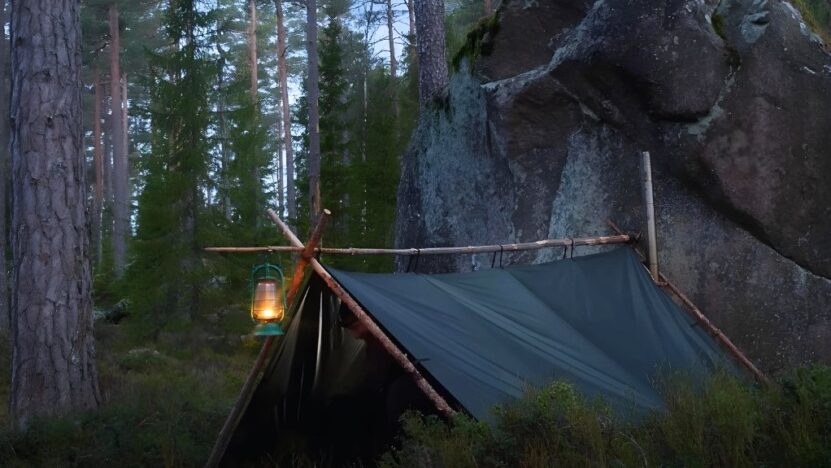
Tarps are incredibly handy little things. They’re super versatile, and you can set them up fast without needing a ton of gear. I always make sure to pack a tarp when I’m heading out into the woods – you never know when you might need to rig up a shelter, whether it’s to keep the rain off or just get a bit of shade.
I usually use some paracord to tie the tarp up between a couple trees. That way, you will have a nice little shelter that can protect you from the elements. It’s a lifesaver, that’s for sure. Definitely one of those camping essentials I wouldn’t hit the trail without.
Fallen Tree Shelters
When it comes to building a quick shelter, I always like to use whatever natural materials I can find. Those fallen trees make for a great sturdy base – just lean some branches and debris up against the trunk, and you’ve got yourself a nice, cozy little hideout.
It’s such an easy and efficient way to get shelter set up, especially in an emergency situation. Saves a ton of time and energy compared to trying to build something from scratch.
Desert Island Shelters
On a desert island, materials like palm fronds and bamboo are your best friends. These resources are durable and plentiful, allowing you to build a shelter that withstands sun and rain. Craft a frame with bamboo and use palm fronds to cover it, creating a cool and shaded haven.
Maintaining Your Shelter
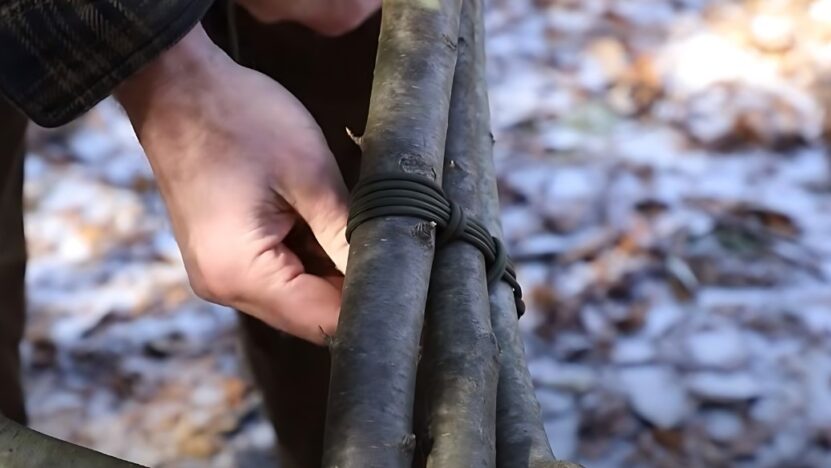
Building your shelter is just the first step. Regular maintenance is necessary to ensure it remains weather-resistant and insulated. Check for gaps, secure loose materials, and adjust the structure as needed. Keeping your shelter in top shape will maximize its effectiveness, especially if you plan to remain outdoors for a while.
Safety Precautions
Safety is paramount when building and using a shelter. Ensure the stability of your structure to avoid collapses, and be cautious with fire. If you’re building a fire within or near your shelter, make sure it’s well-ventilated and keep flammable materials at a safe distance.
Simple Shelters for Gentle Weather
In gentle weather, simple shelters like the lean-to and the ramada offer sufficient protection. They shield you from the sun and mild wind, providing a comfortable and easy-to-build option. The tarp wing shelter is another effective choice against rain, though it doesn’t offer wind protection.
Medium Weather Solutions
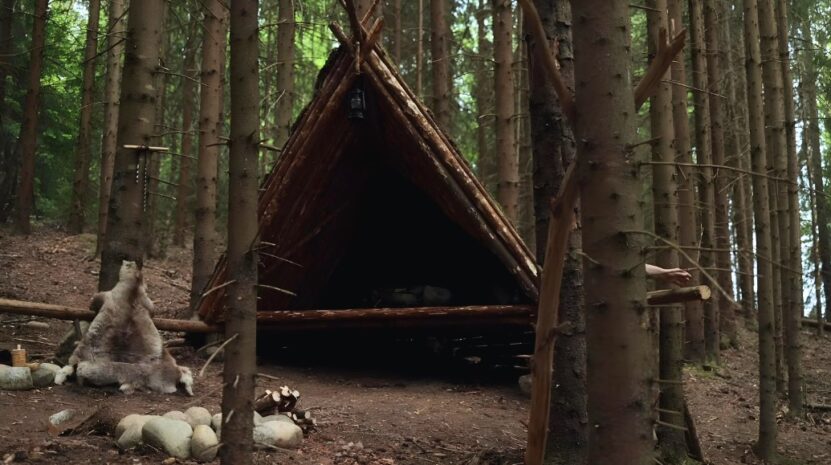
For medium weather conditions, the A-frame shelter is a quick and effective option. Adaptable to various situations, including snow, it provides solid protection. The wedge tarp shelter is another great choice, optimal for strong winds and even capable of collecting rainwater.
Extreme Weather Shelters
In extreme weather, more robust shelters are necessary. The round lodge shelter offers spacious protection, capable of housing multiple people, and an indoor fire. For desert heat, a double roof tarp/desert tarp shelter utilizes thermodynamics to stay cool.
In snowy conditions, the quinzhee is a snow shelter that’s easier to construct than an igloo. While snow caves offer substantial protection, they can be complex to build and carry risks like poor ventilation and potential collapse.
Essential Survival Items
Practicing shelter building and carrying essential items can significantly enhance your preparedness. Here’s what I recommend you always carry with you:
- Tarp: Versatile and crucial for building various types of shelters.
- Paracord: Essential for securing structures and tying materials together.
- Bivy sack: Offers additional protection and warmth.
Summary
Planning ahead, informing others of your whereabouts, and avoiding unnecessary risks are crucial for safe adventures. Always be prepared and practice your shelter-building skills. This way, you’ll be ready for whatever Mother Nature throws your way.
Building an emergency shelter doesn’t have to be complicated. With a bit of knowledge and the right materials, you can create a safe haven in the wilderness.


